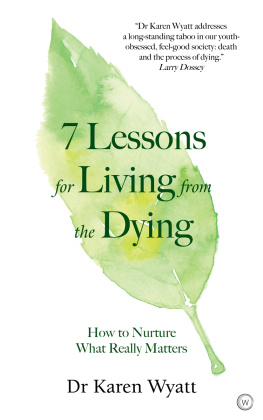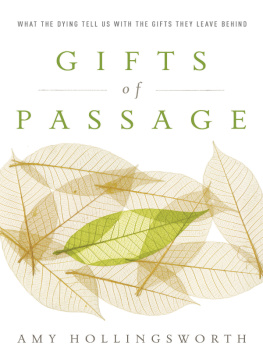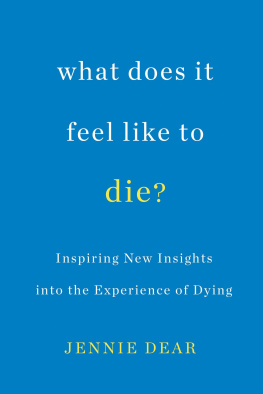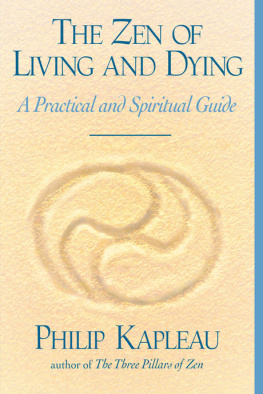Thank you for purchasing this Simon & Schuster Paperbacks eBook.
Sign up for our newsletter and receive special offers, access to bonus content, and info on the latest new releases and other great eBooks from Simon & Schuster Paperbacks.

or visit us online to sign up at
eBookNews.SimonandSchuster.com



| Simon & Schuster Paperbacks a Division of Simon & Schuster, Inc. 1230 Avenue of the Americas New York, NY 10020 www.SimonandSchuster.com |
Copyright 1992 by Patricia Kelley and Maggie Callanan Cover Art 1993 by Alan Ayers
All Rights Reserved, Including the Right to Reproduce this Book or Portions thereof in any form Whatsoever. For Information, Address Simon & Schuster Paperbacks Subsidiary Rights Department, 1230 Avenue of the Americas, New York, NY 10020.
First Simon & Schuster Trade Paperback Edition February 2012
Simon & Schuster Paperbacks and Colophon are Registered Trademarks of Simon & Schuster, Inc.
The Simon & Schuster Speakers Bureau can Bring Authors to your Live Event. For More Information or to Book an Event, Contact the Simon & Schuster Speakers Bureau at 1-866-248-3049 or Visit our Website at www.simonspeakers.com.
Designed by Karolina Harris
The Library of Congress has Cataloged the Hardcover Edition as Follows:
Callanan, Maggie.
Final Gifts: Understanding the Special Awareness, needs, and Communications of the Dying / Maggie Callanan and Patricia Kelley.
p. cm.
Includes Bibliographical References.
1. DeathPsychological Aspects. 2. Terminally IllPsychology. 3. Terminally IllFamily Relationships. 4. DeathPsychological AspectsCase Studies. 5. Terminally IllPsychologyCase Studies. 6. Terminally IllFamily RelationshipsCase Studies. I. Kelley, Patricia, 1945. ii. Title
ISBN 978-1-4516-6725-7 (print) ISBN 978-1-4516-7729-4 (eBook)
ACKNOWLEDGMENTS
During the writing of this book, we have been fortunate to receive help and guidance from many talented people. Without the gentle encouragement and help from our first editor, Mary Boyken, this journey would never have started, nor would Nearing Death Awareness have been so named.
The professional journal Nursing was instrumental in this work by publishing our first article on this topic, and the National Hospice Organization encouraged us to share this information through their publications and conventions. Our thanks to both.
We also thank Wanda Wigfall-Williams for her advice and for introducing us to our agent, Gail Ross. Without exception, Gail has been our anchor, our guide, our advocate, and our friend.
We are grateful to our publisher, Ann Patty, and her staff, especially Fonda Duvanel, for their enthusiasm and assistance; and thank Michael Dolan for his valuable contribution as an editor for this book.
Maggie would like to acknowledge the talent, assistance, vision of clarity, and humor of Todd Pizer, without whom the final process of editing would have been much more difficult.
This book reflects not only our work, but that of many of our hospice colleagues over the years. Their dedication, enthusiasm, and remarkable capacity for caring makes them unique to all those who receive their care. Their support and contributions to this work have been invaluable to us, and as friends they have enriched our lives.
Most importantly, because this book could not have been written without them, we are grateful to the many dying people who were our finest teachers, and as such, gave us so many extraordinary gifts.
TO
ERIN AND ERIC
THE SUNSHINE IN MY LIFE
AND OF WHOM I AM MOST PROUD. MC
DEDICATED WITH LOVE
TO SARA, DAVID, WENDELL, AND CRAIG. PK
CONTENTS
I
NEARING DEATH AWARENESS:
INTRODUCTION AND BACKGROUND
II
NEARING DEATH AWARENESS:
WHAT I AM EXPERIENCING
III
NEARING DEATH AWARENESS:
WHAT I NEED FOR A PEACEFUL DEATH
FINAL
GIFTS
CHAPTER ONE
ITS TIME TO GET IN LINE.
LAURA
Joe paced anxiouslyback and forthat the foot of Lauras bed. There was an odd stillness in the room. He edged around the nurses aide and the corner of the dresser so he could sit by his wifes side on the bed. Deeply concerned, he picked up her hand and began rubbing it.
Laura, are you all right? he asked. Talk to me!
She smiled dreamily and nodded, but said nothing. This upset Joe.
Laura, its me, he said. Say something! Im worried about you!
Joe, Im okay, she whispered.
Joe looked to the nurses aide, who responded with a look of uncertainty.
Sweetheart, do you hurt? he asked. Do you need anything? Is something wrong? Darling, please tell me what it is?
Laura smiled again, closed her eyes, and shook her head. Joe signaled for the aide to join him in the hall.
Whats wrong? he asked. She was fine this morning. A little weak, maybe, but fine. We had a cup of tea together.
The aide patted Joes shoulder. She just got this way. I dont know whats wrong. Shes taken her medicines on schedule and she ate a little breakfast. Does she seem a bit confused to you?
Its hard to tell, Joe said. Shes not talking much. She seems real strange. Wed better call the nurse. I know somethings wrong! Joe nervously reached for the phone.
Someone you care about may be very ill, perhaps dying. Theres so much to dotests, hospitalizations, visits to doctors offices. Sometimes there are two or three physicians to deal witha surgeon, oncologist, radiologist, other specialists.
The medicine chest is jammed with partially used medicinessome bottles nearly full, others almost emptyas new and different ones are tried. Medical equipment seems to occupy every corner of the house. All the furniture has been rearranged, whether to allow a wheelchair to pass or to permit a fast trip to the bathroom.
Coping with terminal illness is more than hard workits all-consuming and creeps into every corner of your life. There are so many people to talk to, so many questions to ask, so much to do. The hopes and triumphs of new or different treatments can change quickly into fears and failures. Its an exhausting, emotional roller-coaster ride. Its like having an unwanted and uninvited stranger in your midst, who seems to take up more and more space.
A terminal illness doesnt belong only to the one who is sickit affects family members, friends, neighbors, coworkers. Not unlike a still pond disturbed by a falling stone, an impending death sends ripples through all the relationships in the life of the dying. Each person involved has his or her own set of issues, fears, and questions.
Beyond coming to terms with the loss of someone we care about, we find ourselves with a jumble of conflicting emotions shaken loose by confronting human limitations and mortality: How can this be happening? I feel powerlesswhat can I do to help? I dont want to face thiswhats it like to die? Is there anything after death? Why are the people around me behaving this way? I feel lost and helpless. What do I do? What do I say?
Is it possible to find anything positive in this devastating event? Can this remaining time be used to share treasured moments of living, while coping with the many losses death brings? Rather than dying on a continuum, can this person be helped to live until he or she dies? Can this be a time of personal growth for all involved?
Next page









